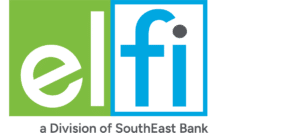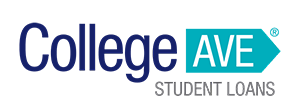If you are an incoming or currently enrolled college student, you probably already have an idea of how expensive college can be. While federal student loans tend to get the spotlight, it’s important to remember there are other government-funded financing options, such as the Federal Work-Study Program. But is work study right for you?
Let’s look at some facts…
Fast Facts About Work-Study Jobs
· The Federal Work-Study Program is available to undergraduate and graduate level students, as well as professional students.
· It requires students to show demonstrated financial need.
· It focuses on community-related jobs, not-for-profit jobs, or jobs related to your coursework or career path.
· It’s available for both full and part-time students.
· It provides paid part-time employment while you are in school.
· Your school must be participating in the Federal Work-Study Program for you to be eligible.
· You must indicate on your FAFSA (Free Application for Federal Student Aid) that you are interested in work study.
· You are paid directly for your work and those earnings are subject to state and federal taxes, except FICA (Medicare and Social Security), which is waived if you are currently enrolled in school full time and work less than half time.
Overview of the Federal Work-Study Program
So, what is Federal Work-Study?
Initiated as part of the Economic Opportunity Act of 1964, the Federal Work-Study Program was established to enable financially disadvantaged students to earn income to help pay for their education. Interestingly, the Federal Work-Study Program was one of the first forms of student financial assistance, predating Pell Grants and Stafford Loans.
Acceptance into the program is based on financial need and available funding, which comes from federal and sometimes state government entities. Benefits are awarded on a first-come, first-served basis, so it is crucial to submit your FAFSA early, and if awarded the opportunity, apply to the available work-study jobs as soon as possible.
The jobs offered typically pay minimum wage (as defined by the governing state) and can be located on your school’s campus or at partner not-for-profit or civic organizations where you can get career-related experience.
Work Study Eligibility and FAFSA
Considered a form of federal financial assistance, the work-study program has no federally-mandated minimum or maximum amounts to be awarded, though your financial aid award letter may inform you how much funding has been allocated to your work-study job. To be eligible, you simply need to be a full or part-time undergraduate or graduate student who can demonstrate financial need.
The great news — because this isn’t a student loan, the work-study earnings don’t have to be repaid. They don’t even have to go directly to tuition. You’ve earned the money, and it’s yours to use however you want. Additionally, money earned in a previous school year does not affect your FAFSA like other income does — it’s excluded from the final calculations for the following school year.
The 4 Best Companies for Private Student Loans
Our Top-Rated Picks for 2023 Offer Low Rates and No Fees
Option to skip a payment once a year

In-school deferment available if you return for another degree

Optional $25 payment plan during school to reduce interest after graduation

1% Cash Back Graduation Reward program
Fixed Rate
Variable Rate

Fixed Rate
Variable Rate
How to be Considered for Work-Study
To apply for the Federal Work-Study Program, fill out the FAFSA as early as possible and indicate that you want to be considered for work study (under the Student Eligibility section). Remember that by selecting this option, you aren’t guaranteed a work-study job, nor are you required to accept funds that are offered.
When you received your financial award letter, it will include a listing of all the amounts you’re eligible to receive. These can be loans, grants, and work study. If awarded and you want to take advantage of the work-study program, then it’s important to act fast and apply for a qualifying job as soon as you find out you are eligible.
Each academic year, work study has deadlines defined by your school to apply, accept, start working, and stop working — be sure to check with your school on their specific deadlines. Any funds that are still available at the conclusion of the school year are canceled and don’t carry over to the new school year.
How to Apply for Work-Study Jobs
Once you are awarded a work-study opportunity, it will be up to you to find available jobs, apply, interview, and accept a position — all great experience for future job hunting. For on-campus jobs, most colleges and universities have a job portal showing available jobs, each with instructions for applying and setting up interviews for any open positions. For off-campus opportunities, your college’s financial aid office can help point you in the right direction.
Expect to encounter full hiring practices with background checks and reference checks, especially for off-campus jobs. If this is your first job or you just want some assistance, most schools offer some job-hunting and interviewing support to help you navigate the process.
Lastly, be sure to apply for jobs that allow you to meet your study obligations. Work-study is supposed to give you a well-rounded experience, not add to your stress or cause you to miss class or deadlines.
What Kind of Jobs Are Available
When looking for jobs on campus, you can expect to see research assistant jobs, office administration and computer lab jobs, and library assistant work. Also, there may be athletic and fitness jobs available, as well as positions in food services. This is a great opportunity to dip your toe into the field you are interested in choosing for your career to see if you really enjoy the work.
For off-campus employment, you can expect jobs like tutoring, reading support in elementary schools, plus administrative and office support positions. Employers that participate in the work-study program are typically government and not-for-profit groups but can include large corporations like hotel chains and healthcare facilities.
How Do You Get Paid
As they’re earned, your wages are paid through your school, and you can request that the money is used to directly pay tuition, fees, or room and board. You can also have the money sent to you personally and it can be used at your discretion. According to a Sallie Mae report in 2022, the average student job earned $1,531 during the school year.

Free 13-page eBook: How to Pay For College
Download instantly with just one click
Free eBook: How to Pay for College
Download instantly with
just one click

How Many Hours Can You Work
There is not a set number of hours that you can work in the work-study program. However, most schools recommend that you don’t work more than 20 hours per week. When carrying a full load of classes, you may want to work considerably less, as your studies should take priority over your work-study job.
Benefits of Work-Study vs. Part-Time Work
While you can choose to work a part-time job instead of a work-study job, consider these benefits:
· Work-study jobs can be easier to find. Not only does the college you attend have tons of opportunities, but local businesses are eager to hire subsidized college students. They don’t have to pay the salaries and typically get motivated employees who are eager to learn.
· Any money earned can reduce the amount of loans you may need and fewer loans means less long-term debt.
· Taking an on-campus job can save you on transportation or commuting costs. It’s a lot easier to get to a job across the quad than across town.
· Regular part-time work can reduce your financial aid eligibility for the next year. It must be reported on your FAFSA, while work study is not included in the final calculations.
· Your work-study employer will likely be much more understanding of your time limits, need to study, and inability to pick up extra shifts. A part-time employer may not be as flexible.
What Are Other Options If You Don’t Qualify
There is always the chance that you don’t qualify. However, personal savings, grants, scholarships, and federal and private student loans, in that order, are all options that can be figured into your overall college funding plan. Start with family and personal college funds, add grants and scholarships, and finally factor in federal loans followed by private loans to fill in the gaps.
Once you have depleted your federal loan limits each year, consider private loans. At Purefy, an independent marketplace, you can request quotes from leading private lenders offering the best interest rates, flexible terms, and no fees. Once you find the best lending option, it’s fast and simple to fill out the application and borrow the money you need.
Don’t forget, there are also other alternatives to consider, including other part-time jobs or outside independent contracting and side hustles.
In Summary
Work study can be a great opportunity to make some extra cash without impacting your eligibility for federal financial assistance. Eligibility is simple and the jobs can be geared towards your area of study. You’ll also get experience in resume writing, interviewing, and being hired – some of the most important skills to learn while you’re still in school.
And if you find you are in need of a private student loan, check out our rate comparison tool to get real offers from top lenders in minutes, with no impact on your credit score.
Need a Private Student Loan? Check Out the Top Lenders of 2023.
Compare interest rates and perks to find the best lender for you.
















